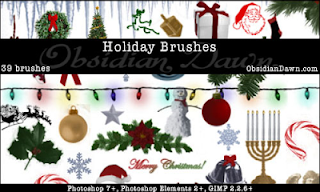Digital art software comes in mostly two categories, vector (for line drawings) and raster (for working with bitmap images, like photos). Brushes are usually associated with raster graphics programs; however, Gimp brushes can be in three forms: animation, raster and vector.
Essentially a brush changes the shape, and possibly other attributes, of your cursor. In a way a brush acts like a rubber stamp (some programs have a separate feature called rubber stamp). Most art software comes preloaded with a variety of brushes. You can also download additional ones and/or make your own. Most of the additional brushes available online are compatible with Photoshop. Since Photoshop, an Adobe product, and PhotoPaint and Painter, Corel products, are both proprietary software, I'll be talking about Gimp brushes today. Gimp can use Photoshop brushes and is open source -- version 2.8 is the latest and it's very good.
There's a very long, but good, tutorial on using brushes in Gimp on YouTube. In fact there are many Gimp tutorials on YouTube.
All-free-download vector brushes for non-commercial use (Exercise caution clicking at this site -- it's closely tied with Shutter Stock):
***
If you're wondering about Gimp and Photoshop compatibility, here's an article from Chron, small business division.
Photoshop may be the industry standard for digital graphics, but I dislike working with it. My preferred money-sink is Corel. But seeing the video above on Gimp, I'm beginning to wonder about switching.
-- Marge




No comments:
Post a Comment